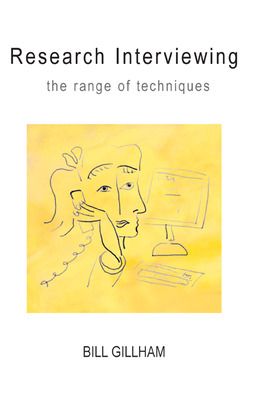Research Interviewing: The Range of Techniques
Receive via shipping:
- Colour, print bound version of the complete text
Acknowledgements
List of tables
List of figures
PART ONE: PRINCIPLES AND PRACTICE
1 Research interviewing: key issues
2 The ethics of interviewing
3 The importance of question/topic development
4 Different techniques and the ‘cost’ development factor
5 The core skills of interviewing
PART TWO: FACE-TO-FACE METHODS
6 Ethnographic methods: the interviewer as participant-observer in real-life contexts
7 The unstructured interview
8 The élite interview
9 Group interviewing
10 The semi-structured interview
11 Structured interviewing: the use of recording schedules
12 The video interview
13 The interview as a qualitative experiment
PART THREE: DISTANCE METHODS
14 The telephone interview
15 The e-mail interview
16 The ‘open’ questionnaire interview
PART FOUR: ANALYSIS AND INTERPRETATION OF CONTENT
17 Transcribing the interview
18 Narrative overview versus categorical analysis
19 Deriving categories (coding) from the data
20 Quantitative analysis of categorical data
21 Writing up interview data
22 Combining interview data with data from other sources
References
Index
* What is research interviewing?
* What techniques are used? Exactly what do you do in each technique?
* How is interview data analysed and written up?
The robust, real-world approach makes this book appropriate for practitioner researchers and postgraduate students up to PhD level. Covers distance and face-to-face interviewing, from the un-structured and naturalistic to the highly structured, focused and time-efficient.
Emphasis is placed on using the most appropriate methods for the research purpose and how to identify which method is practicable. Based on over thirty years of teaching and supervising research and postgraduate students, the author anticipates questions and difficulties at a level of practical detail. Practical and easy to use, this book is essential for anyone doing research interviewing.

